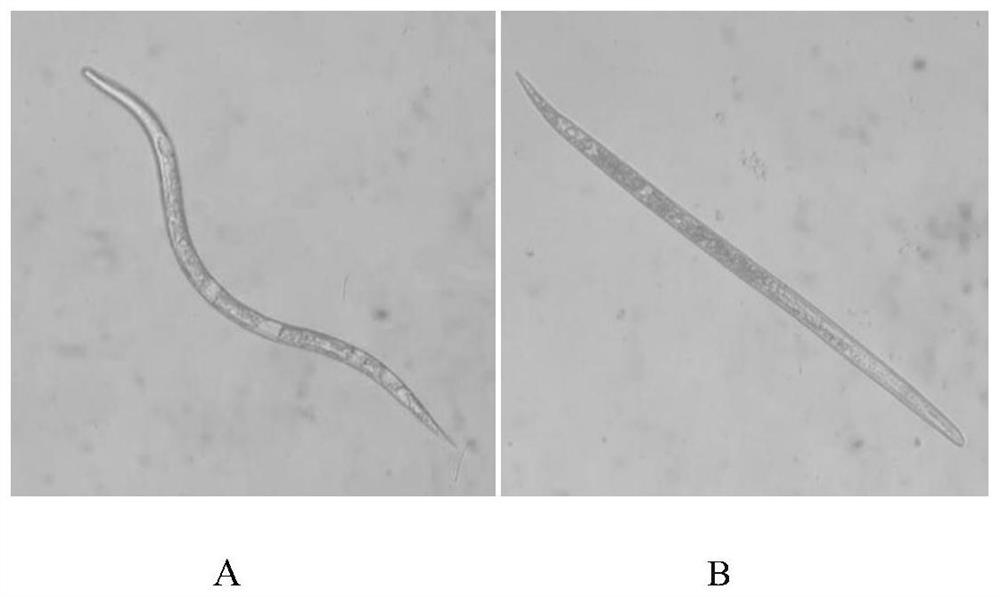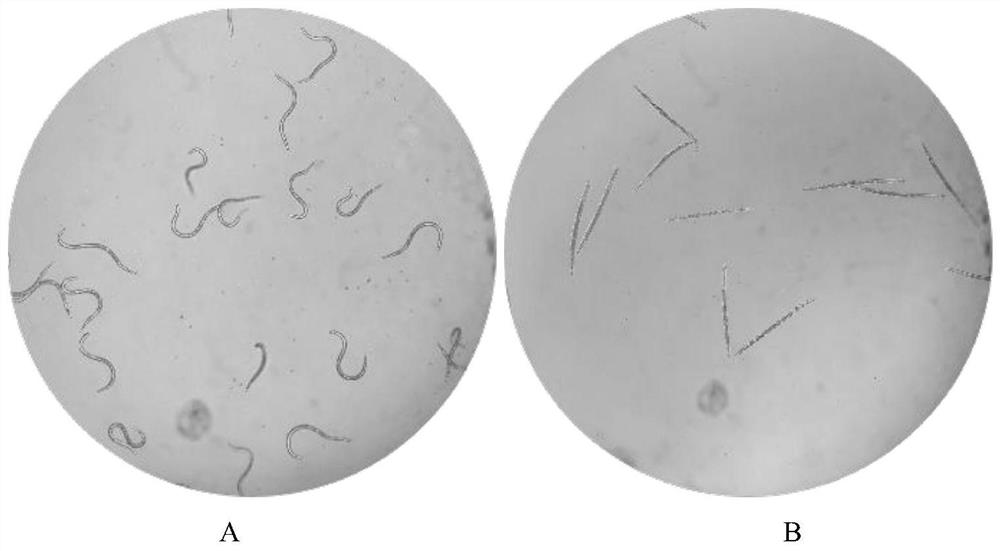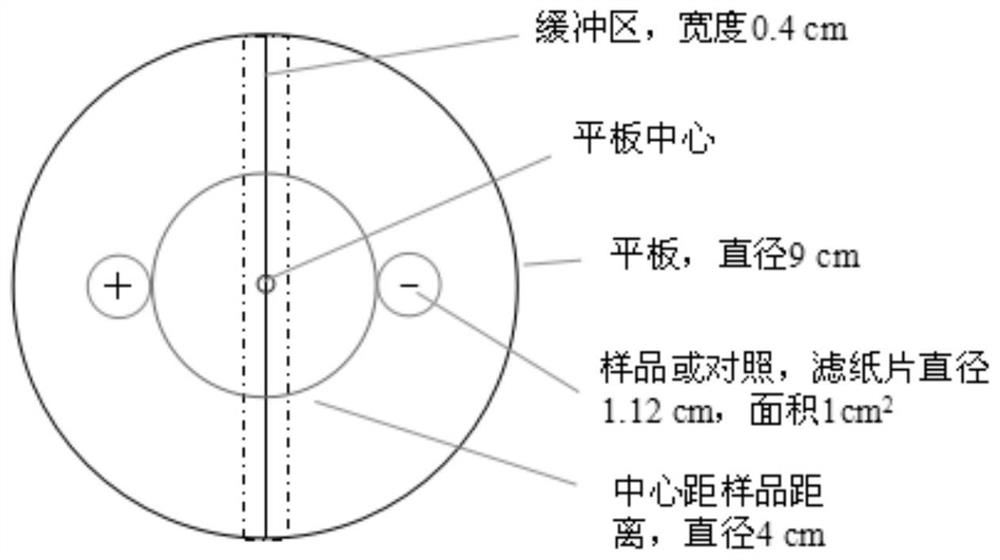Application of Acetaldehyde in Preparation of Nematode Insecticide
A nematode and acetaldehyde technology, applied in the field of agricultural microbiology, can solve the problems of human and livestock insecurity, few root-knot nematodes, and restrictions on agronomic traits, and achieve sustainable results
- Summary
- Abstract
- Description
- Claims
- Application Information
AI Technical Summary
Problems solved by technology
Method used
Image
Examples
Embodiment 1
[0022] The application of acetaldehyde in the preparation of root-knot nematode pesticides is as follows:
[0023] Pick nematode-infected root-knot nematodes from the tomato roots, place egg masses in a 96-well plate and incubate at 20°C to observe the hatching of root-knot nematodes; collect J2 stage larvae of root-knot nematodes in a centrifuge tube to obtain a nematode suspension; add samples to a 96-well plate 200 μl, using the solvent as a blank control, add 2 μL chloramphenicol (30 mg / mL) and 30 nematodes, each group has 3 replicates, sealed with parafilm, and placed in a constant temperature incubator; observe the experimental results at 6h and 24h.
[0024] Nematode mortality rate = number of dead nematodes / number of tested nematodes*100%
[0025] Table 1. Activity of Acetaldehyde against Meloidogyne incognita
[0026]
Embodiment 2
[0028] The application of acetaldehyde in the preparation of root-knot nematode fumigant, the application process is as follows:
[0029] Pick nematode-infected root-knot nematodes from the roots of tomatoes, place egg masses in a 96-well plate and incubate at 20°C to observe the hatching of root-knot nematodes; collect J2 stage larvae of root-knot nematodes in a centrifuge tube to obtain a nematode suspension; select one in the 96-well plate Add 200 μL of sample to the well, add 2 μL of chloramphenicol (30 mg / mL) and 60 nematodes to each well of the four wells next to the well, seal with parafilm, and place in a constant temperature incubator; observe the experimental results at 6 hours and 24 hours.
[0030] Nematode mortality rate = number of dead nematodes / number of tested nematodes*100%
[0031] Table 2. Fumigation activity of acetaldehyde against Meloidogyne incognita
[0032]
[0033] 10mg / mL acetaldehyde was used to fumigate root-knot nematodes, and the mortality r...
Embodiment 3
[0035] Inhibition of acetaldehyde on egg hatching of Meloidogyne incognita by fumigation
[0036] Pick nematode-infected root-knot nematodes from the roots of tomatoes, place egg masses in a 96-well plate and incubate at 20°C to observe the hatching of root-knot nematodes; collect J2 stage larvae of root-knot nematodes in a centrifuge tube to obtain a nematode suspension; select one in the 96-well plate Add 200 μL of sample to the well, add 1 oocyst to each well of the four wells next to the well, seal with parafilm, and place in a constant temperature incubator; observe the experimental results on 1d, 2d, and 3d.
[0037] Table 3. Inhibitory effect of acetaldehyde on egg hatching of M. incognita
[0038]
[0039] Fumigation of root-knot nematode oocysts with 10mg / mL acetaldehyde can effectively inhibit egg hatching.
PUM
 Login to View More
Login to View More Abstract
Description
Claims
Application Information
 Login to View More
Login to View More - R&D
- Intellectual Property
- Life Sciences
- Materials
- Tech Scout
- Unparalleled Data Quality
- Higher Quality Content
- 60% Fewer Hallucinations
Browse by: Latest US Patents, China's latest patents, Technical Efficacy Thesaurus, Application Domain, Technology Topic, Popular Technical Reports.
© 2025 PatSnap. All rights reserved.Legal|Privacy policy|Modern Slavery Act Transparency Statement|Sitemap|About US| Contact US: help@patsnap.com



